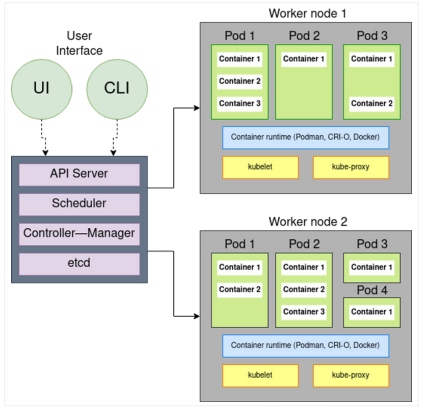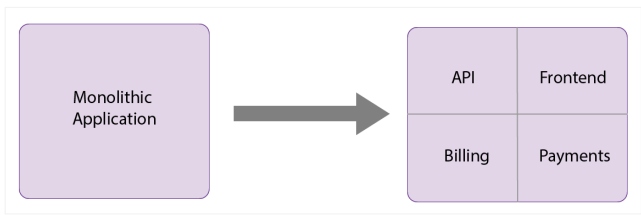The Importance of Kubernetes in the Cloud-Native Ecosystem
In this article, see why Kubernetes is a must-adopt cloud-native tool for businesses and how it helps them speed up their software deployment.
Join the DZone community and get the full member experience.
Join For FreeThis is an article from DZone's 2022 Kubernetes in the Enterprise Trend Report.
For more:
Read the Report
If you are a developer or an engineer working in the software industry, then you have undoubtedly noticed the complexity of managing resources across different services and applications. This is especially true when your company has scaled beyond a single data center or environment. With so many stakeholders involved in various projects, it becomes difficult for everyone to keep track of where everything stands at any given time. This is where Kubernetes comes into the picture.
There are several reasons why Kubernetes is gaining popularity among modern businesses:
- Kubernetes can improve productivity and scalability, reduce the risk of downtime, and enable continuous delivery of applications.
- Kubernetes comes with a rich set of features out of the box, making it easy for you to set up and manage a containerized application lifecycle from development to production.
- Kubernetes is open source, and its development has been driven by the community. It is also highly extensible, allowing third-party vendors to build tools and services that can integrate with Kubernetes and make it even more powerful.
- Kubernetes supports all major operating systems and is also compatible with most standard programming languages.
Kubernetes is a powerful tool for accelerating your journey to the cloud-native world, making it easier for you to manage containerized microservices and accelerate your adoption of DevOps practices. In this article, we will see why Kubernetes is a must-adopt cloud-native tool for businesses and how it helps them speed up their software deployment.
Kubernetes: King of the Cloud-Native Ecosystem
Today, enterprises of all sizes are adopting cloud-native computing to accelerate their digital transformation. Kubernetes continues to be the leading provider in the cloud-native ecosystem and is becoming an essential tool for anyone looking to adopt a cloud-native strategy.

Figure 1: Kubernetes architecture
Image source: Nived Velayudhan, CC BY-SA 4.0
Kubernetes can help you achieve a cloud-native ecosystem by automating the process of setting up an environment where you can host your containerized applications. This can be done with just a few simple commands. Kubernetes can also help you deal with the complexity involved in managing your application resources across different services and applications that are distributed across multiple environments.
Kubernetes handles the entire lifecycle of your application containers, including the orchestration, configuration, and scheduling of containers across a set of machines. In addition, Kubernetes is designed to be highly scalable and fault-tolerant, making it ideal for continuous delivery of your code and enabling you to achieve continuous delivery with less manual effort and better collaboration between your teams.
The most significant benefit of Kubernetes for DevOps and the cloud-native ecosystem is that it alleviates burdens. It allows engineers to share their dependencies with IT operations. It also resolves conflicts among different environments. It allows the engineers to handle customer needs while relying on the cloud for many functioning applications. Kubernetes simplifies container tasks, such as canary deployment, rolling updates, and horizontal, vertical, and dynamic auto-scaling. It is critical to the DevOps managed services to streamline development, testing, and deployment pipelines.
Kubernetes can assist with continuous application delivery by rolling out updates in a consistent and streamlined fashion. The application can be orchestrated using containers. In order to deploy multiple applications using Kubernetes, each one of them is placed in a distinct container. Since the updates can be performed in one part of the application by restarting the container without impacting the remainder of the software, they can be accomplished in one part of the app.
Life Before Kubernetes
It all started with big monolithic applications, which involved the complexities of managing and delivering software. It used to take months for developers to push their changes to production. There used to be severe downtimes, and businesses used to incur losses due to insufficient uptimes. It was a headache for organizations to make sure their services handled ongoing changes smoothly without affecting any services. That is when microservices came along as a boon, where a humongous monolithic application breaks down as several services, and each service is handled by a group of developers.
Each microservice behaves as an individual service without affecting the other service. This helped developers as well as organizations to deploy software in chunks with increased frequency. During this time, Docker was introduced to deploy these microservices with the containerization concept.
Figure 2 below shows a simple representation of microservices architecture with various microservices involved in an e-commerce website:

Figure 2: Representation of microservices
Docker completely revolutionized software packaging and delivery with containers, helping organizations to deliver software with speed. While containerization made a big move, there was a need for an orchestrator to manage these containers, and that is how Kubernetes was born.
Consider a scenario where a start-up is making use of Docker containers. As the startup grows, the number of applications also increases and, similarly, so do the containers. It is easy to manage these containers when their number is lesser, but as the number starts to grow, it becomes difficult and you need an orchestrator to manage these containers. This is exactly where Kubernetes shines and helps you manage the containers with its unique features of scalability, security, self-healing, high availability, and much more.

Figure 3: Application delivery flow
Life After Kubernetes
Google introduced Kubernetes in mid-2014, and later Microsoft, Red Hat, IBM, and Docker joined the community. Kubernetes made every developer's and SRE’s life easier by helping them coordinate well and manage the workloads efficiently. When used efficiently, Kubernetes:
- Removes downtimes
- Helps in application scalability according to the traffic pattern
- Helps in securing the application and the Secrets by incorporating security policies
- Allows running a plethora of applications in production
- Allows applications to roll back if something goes wrong
- Increases developer productivity by automating the tasks associated with containers.
With Kubernetes, you can deploy new projects more quickly. A reusable pipeline and new loads as code modules can now be distributed across a variety of projects. It can be difficult for development teams to keep tabs and monitor infrastructure operations if they are not automated. Unexpected traffic spikes or power outages, for example, might occur. When the application goes down, it is not a good sign for the organization. With Kubernetes, you can automate scaling and update patches to address such issues.
Let’s consider an example to help understand the importance of Kubernetes in the cloud-native ecosystem. Let’s say you have a production app that handles customer orders. You don’t want to push new code to that app unless it’s been thoroughly tested and meets certain criteria. Traditionally, you would wait until your testing team has confirmed that the new code can be deployed safely, and then you would wait for an operations engineer to perform the deployment manually. While this model works, it’s incredibly time-consuming. This is especially true if you have multiple apps that require this type of attention.
If your app fails, you might need to wait several days before retrying the deployment. This causes your organization to lose out on valuable production time while you wait for the system to be ready again. With Kubernetes, you can use continuous delivery to deploy new code to your production app every time someone pushes a new version to the code repository. This ensures that nothing is deployed to production unless it meets your organization’s deployment criteria. Kubernetes also has a built-in self-healing mechanism that can quickly detect when nodes go offline and bring them back online.
Kubernetes Usage: Notable Case Studies
Now, Kubernetes is being used by all the big organizations that like to deploy their software fast with scalability. Kubernetes has become a de facto container orchestration tool in the cloud-native world. Let's look at some notable examples of Kubernetes usage in different organizations:
- The German automaker Mercedes-Benz makes use of 900 Kubernetes clusters to support its wide range of products across the globe.
- PayPal recently started scaling Kubernetes to over 4,000 nodes and 200,000 Pods.
- HBO found that in times of peak demand for Game of Thrones, it was running out of available IP addresses to help deliver the content to viewers, and HBO chose Kubernetes to solve this problem along with scalability issues. "We went from not running a single service inside of a container to hosting all of the Games of Thrones Season Seven with Kubernetes," Illya Chekrygin, Senior Staff Engineer at HBO, told the 2017 KubeCon audience..
- Kubernetes helped Tinder Engineering drive innovations toward containerization and low-touch operation through immutable deployment. Application build, deployment, and infrastructure would be defined as code. They were also looking to address the challenges of scale and stability, and they solved interesting challenges by migrating 200 services and running a Kubernetes cluster at scale.
- Pinterest used Kubernetes to scale its workloads, and by the end of 2020, they orchestrated 35,000+ Pods with 2,500+ nodes in their Kubernetes clusters.
Conclusion
From its origin as an open-source project within Google to becoming a leading force in the enterprise cloud-native space, Kubernetes has come a long way. Today, enterprises and developers from all over are finding new ways to leverage Kubernetes for operations and application development. Kubernetes has become the standard approach for deploying and managing containerized applications. The Google-backed project has grown significantly in adoption since its inception. If you’re looking to accelerate your organization’s digital transformation journey, you should consider using Kubernetes. While it’s not a tool that every organization will need, it is an essential piece of any modern IT toolkit. Kubernetes has gained a special place in the cloud-native ecosystem, and in fact, it has become a synonym for the word "cloud-native."
This is an article from DZone's 2022 Kubernetes in the Enterprise Trend Report.
For more:
Read the Report
Opinions expressed by DZone contributors are their own.

Comments